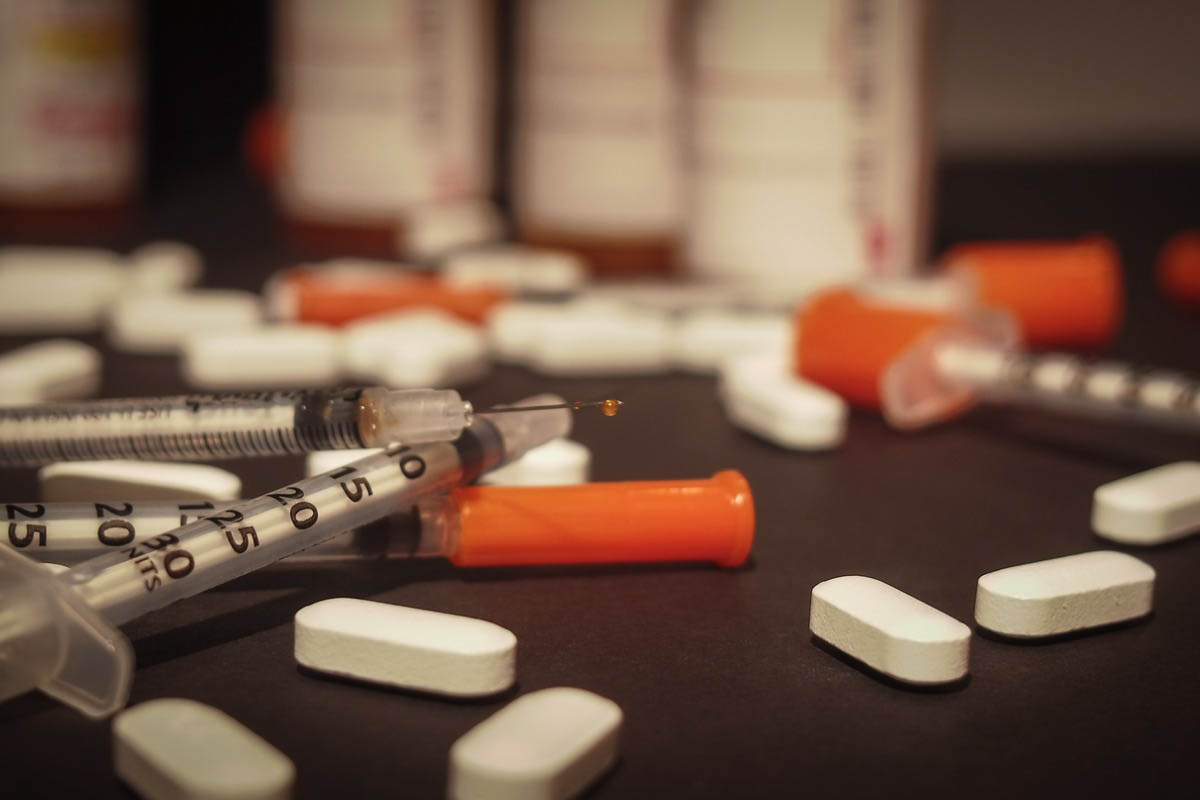ABSTRACT
Importance: Opioid misuse/abuse is a pervasive problem in the United States, and the growing use of fentanyl-contaminated products is adding fuel to the opioid crisis.
Objective: To review the rising prevalence of nonprescription fentanyl in counterfeit oxycodone, paying specific attention to oxycodone for cost analysis.
Evidence Review: A literature search was performed using 3 databases (Google Scholar, PubMed, and Clinical Key) to identify English-language articles published from January 2010 to October 2022. Search terms were street oxycodone and prescription oxycodone, street oxycodone. An additional search of fentanyl was performed to gather more information about the pharmacology behind fentanyl overdoses. Studies and articles were selected based on information related to the presence of non-prescription fentanyl in illicit supplies of oxycodone. Additional articles were included to demonstrate the cost, manufacturing, and overdose rates of fentanyl-laced counterfeit opioids. A total of 13 articles were included in the final review.
Findings: The demand for illicit oxycodone provides an opportunity in which counterfeiters can thrive, using dangerous adulterating agents such as fentanyl to maximize their profits. Those purchasing oxycodone illicitly may or may not be aware of the presence of fentanyl in their tablets, which has clearly resulted in rising overdose numbers.
Conclusion: Clinicians should counsel patients at risk for opioid misuse on the risks of counterfeit oxycodone.
Prim Care Companion CNS Disord 2023;25(6):22nr03433
Author affiliations are listed at the end of this article.
Oxycodone is being used illicitly and is being contaminated with fentanyl. This illicit oxycodone has some popular names, some of which are “Perc 30s,” “M 30s,” “blues,” and “dirty oxys.”1,2 Oxycodone is among the most popular misused prescription opioid subtypes, with only 43.6% of those misusing obtaining their supply through prescriptions from a health care provider.3 The rise in dangerous additives, such as non-prescription non-pharmaceutical fentanyl (NPF), to counterfeit oxycodone poses a serious health risk to those who misuse opioids. Opioid misuse/abuse is a pervasive problem in the United States, and the growing use of fentanyl-contaminated products is only adding fuel to the opioid crisis. The illicit use of prescription opioids such as hydrocodone and oxycodone is considered one of the fastest rising forms of drug use in the United States.3,4 In 2020, 9.5 million Americans (3.4% of the population) over the age of 12 years misused opioids; 3.2 million Americans reportedly misused oxycodone.3 The popularity of misusing prescription oxycodone allows for illicit production and transition to use of non-prescription fentanyl. In this review, we discuss the rising prevalence of non-prescription fentanyl in counterfeit oxycodone, paying specific attention to oxycodone for cost analysis.
METHODS
A literature search was performed using 3 databases (Google Scholar, PubMed, and Clinical Key) to identify English-language articles published from January 2010 to October 2022. Search terms were street oxycodone and prescription oxycodone, street oxycodone. An additional search of fentanyl was performed to gather more information about the pharmacology behind fentanyl overdoses. Studies and articles were selected based on information related to the presence of non-prescription fentanyl in illicit supplies of oxycodone. Additional articles were added to demonstrate the cost, manufacturing, and overdose rates of fentanyl-laced counterfeit opioids. A total of 13 articles1–13 were included in the final review.
RESULTS
Oxycodone Cost and Demand
An analysis of the prices of illicit oxycodone provides insight into the availability, demand, and abuse potential of the drug.5 A 2013 study5 on the selling price of illicit (on the street) oxycodone found that the average price per milligram was $1.05 for the immediate release formulation, and $0.85 per milligram for the extended-release formula. A later 2019 study6 revealed that the mean price per milligram ranged anywhere from 12 cents to $1.07, with no specification in the price difference between the two formulations. The lower cost of the extended-release version suggests that this formulation is less desirable on the market and potentially suggests that it has a lower abuse potential.
If 30 mg is a common strength sold illicitly (due to the popularity of counterfeit “Perc 30s”),1,2 a tablet could have sold for anywhere from $3.60 to $32.10 in 2018. The high price of prescription oxycodone tablets provides good evidence that they are a coveted product. A 2022 study2 conducted in Arizona suggested that the rise in availability of counterfeit tablets containing non-prescription fentanyl has decreased the cost to as low as $5 per tablet.
The Manufacturing Process
The increase in opioid abuse, and therefore the increase in demand, has fueled the market for manufacturing opioid derivatives with varying composition and potency.7 Illicitly manufactured drugs are often synthesized with additional agents that have their own pharmacologic actions; these agents are known as adulterants, contaminants, or cutting agents.8 Synthetic non-pharmaceutical fentanyl is an adulterant commonly found in the counterfeit supply.8,9 Fentanyl is most often identified as a single drug, but it continues to be found in mixtures with other drugs and is sold as tablets resembling other, less potent opioids.9 Articles10 have found that NPF has been identified as an adulterant in counterfeit opioids, heroin, and cocaine.
Pill presses are readily available through illicit means, and counterfeit tablets can easily be made to look like their prescription counterparts using dye molds, tableting binders and fillers, food-grade dyes, and these readily obtained pill presses.11 Some of these counterfeit tablets are impossible to distinguish from their legitimate counterparts without chemical testing.11 This puts significant risk on the consumer, who has no way to know if, or how much, fentanyl is present.11 We must also consider that consumers may be unaware of the presence of fentanyl in their purchases, considering these tablets are manufactured to be identical to their prescription counterparts, which poses a serious risk to fentanyl-naive users.
Fentanyl Pharmacology
An important question to consider regarding fentanyl overdose is if tolerance to opioid respiratory depression through use of non-fentanyl opioid agonists provides any level of protection to fentanyl.12 A study11 largely focused on the cross-tolerance of fentanyl and morphine suggested that any level of prior illicit opioid use may not provide significant tolerance to fentanyl. Studies12 indicate that fentanyl is 50–100 times more potent than morphine. This suggests a dangerous precedent regarding the counterfeit tablets accessible illicitly as users have no way to know how much fentanyl they are receiving per tablet. With likely no additional protection against the respiratory depression caused by fentanyl, users are at risk to overdose every time they use a tablet obtained outside of a traditional prescriber relationship.
Rising Overdose Rates
Counterfeit tablets resembling prescription opioids such as oxycodone are widely available for purchase. The Drug Enforcement Administration (DEA) has found that these counterfeit tablets can contain up to 2 mg of fentanyl per tablet, which is a lethal dose in an opioid-naive person.1 In 2021, the DEA seized over 20,000,000 counterfeit tablets, many laced with fentanyl.1 Laboratory analyses determined that 4 in 10 counterfeit tablets manufactured with fentanyl contain a lethal dose.1 This presents significant danger to those who purchase these counterfeit medications, especially as they may be unaware of the presence of fentanyl in these otherwise legitimate-appearing tablets. As of January 2020, fentanyl-laced counterfeit tablets were present in 49 of the 50 states, with 38 states reporting deaths related to the counterfeit tablets.9 In 2020, more than 56,000 individuals died of overdoses involving synthetic opioids; this marks an increase by 56% from 2019 to 2020.13 In the 12-month reporting period ending in April 2021, the Centers for Disease Control and Prevention reported over 100,000 drug overdose deaths in the United States, which is the most ever reported.1
CONCLUSION
The rising popularity of counterfeit opioids with varying levels of fentanyl is a dangerous reality faced by those obtaining oxycodone outside of traditional physician-patient prescribing. The obvious demand for illicit oxycodone provides an opportunity in which counterfeiters can thrive, using dangerous adulterating agents such as fentanyl to maximize their profits. Those purchasing oxycodone illicitly may or may not be aware of the presence of fentanyl in their tablets, which has clearly been evidenced in rising overdose numbers. The DEA has issued warnings regarding the presence of fatal doses of fentanyl found in illicit drugs.1 Providers must also take on the responsibility to warn patients about the high potential of a fatal overdose if they are using illicitly purchased oxycodone.
Article Information
Published Online: November 9, 2023. https://doi.org/10.4088/PCC.22nr03433
© 2023 Physicians Postgraduate Press, Inc.
Submitted: October 17, 2022; accepted June 15, 2023.
To Cite: Hartmann GE, Sethi R. The role of non-pharmaceutical fentanyl–contaminated counterfeit oxycodone in increasing opioid overdoses: a commentary review. Prim Care Companion CNS Disord. 2023;25(6):22nr03433.
Author Affiliations: University of Kansas School of Medicine, Kansas City, Kansas (Hartmann); Department of Addiction Psychiatry, University of Kansas Health System, Kansas City, Kansas (Sethi); Department of Psychiatry and Behavioral Sciences, University of Kansas Medical Center, Kansas City, Kansas (Sethi).
Corresponding Author: Roopa Sethi, MD, Department of Psychiatry and Behavioral Sciences, University of Kansas Medical Center, 3901 Rainbow Blvd, Mail Stop 4015, Kansas City, KS 66160 ([email protected]).
Relevant Financial Relationships: None.
Funding/Support: None.
ORCID: Roopa Sethi: https://orcid.org/0000-0003-4209-591X
Clinical Points
- Non-pharmaceutical fentanyl as a contaminant in counterfeit oxycodone has a rising responsibility in the number of opioid overdoses in the United States.
- Clinicians should counsel patients at risk for opioid misuse on the dangers of counterfeit oxycodone.
References (13)

- One pill can kill. DEA website. https://www.dea.gov/onepill. Accessed October 12, 2022.
- Daniulaityte R, Sweeney K, Ki S, et al. “They say it’s fentanyl, but they honestly look like Perc 30s”: Initiation and use of counterfeit fentanyl pills. Harm Reduct J. 2022;19(1):52. PubMed CrossRef
- Delphin-Rittmon ME. Slides for the 2020 National Survey on Drug Use and health. Substance Abuse and Mental Health Services Administration website. https://www.samhsa.gov/data/sites/default/files/reports/slides-2020-nsduh/2020NSDUHNationalSlides072522.pdf. Published July 2022. Accessed October 13, 2022.
- Daniulaityte R, Falck R, Carlson RG. “I’m not afraid of those ones just 'cause they’ve been prescribed”: perceptions of risk among illicit users of pharmaceutical opioids. Int J Drug Policy. 2012;23(5):374–384. PubMed CrossRef
- Surratt H, Kurtz S, Cicero T, et al. Street prices of prescription opioids diverted to the illicit market: Data from a National Surveillance Program. J Pain. 2013;14(4):S40. CrossRef
- Lebin JA, Murphy DL, Severtson SG, et al. Scoring the best deal: quantity discounts and street price variation of diverted oxycodone and oxymorphone. Pharmacoepidemiol Drug Saf. 2019;28(1):25–30. PubMed CrossRef
- Collier R. Street versions of opioids more potent and dangerous. CMAJ. 2013;185(12):1027. PubMed CrossRef
- Cole C, Jones L, McVeigh J, et al. Adulterants in illicit drugs: a review of empirical evidence. Drug Test Anal. 2011;3(2):89–96. PubMed CrossRef
- Drug Enforcement Administration. 2020 National Drug Threat Assessment. DEA website. https://www.dea.gov/documents/2021/03/02/2020-national-drug-threat-assessment. Published March 2021. Accessed October 12, 2022.
- Singh VM, Browne T, Montgomery J. The Emerging Role of Toxic Adulterants in Street Drugs in the US Illicit Opioid Crisis. Public Health Rep. 2020;135(1):6–10. PubMed CrossRef
- Pill press laws: A forgotten aspect of counterfeit drug-making. LAPPA website. https://legislativeanalysis.org/pill-press-laws-a-forgotten-aspect-of-counterfeit-drug-making/. Published March 22, 2021. Accessed October 12, 2022.
- Kelly E, Sutcliffe K, Cavallo D, et al. The anomalous pharmacology of fentanyl. Br J Pharmacol. 2023;180(7):797–812. PubMed CrossRef
- Fentanyl. Centers for Disease Control and Prevention website. https://www.cdc.gov/opioids/basics/fentanyl.html. Published June 1, 2022. Accessed October 12, 2022.
Please sign in or purchase this PDF for $40.
Save
Cite


